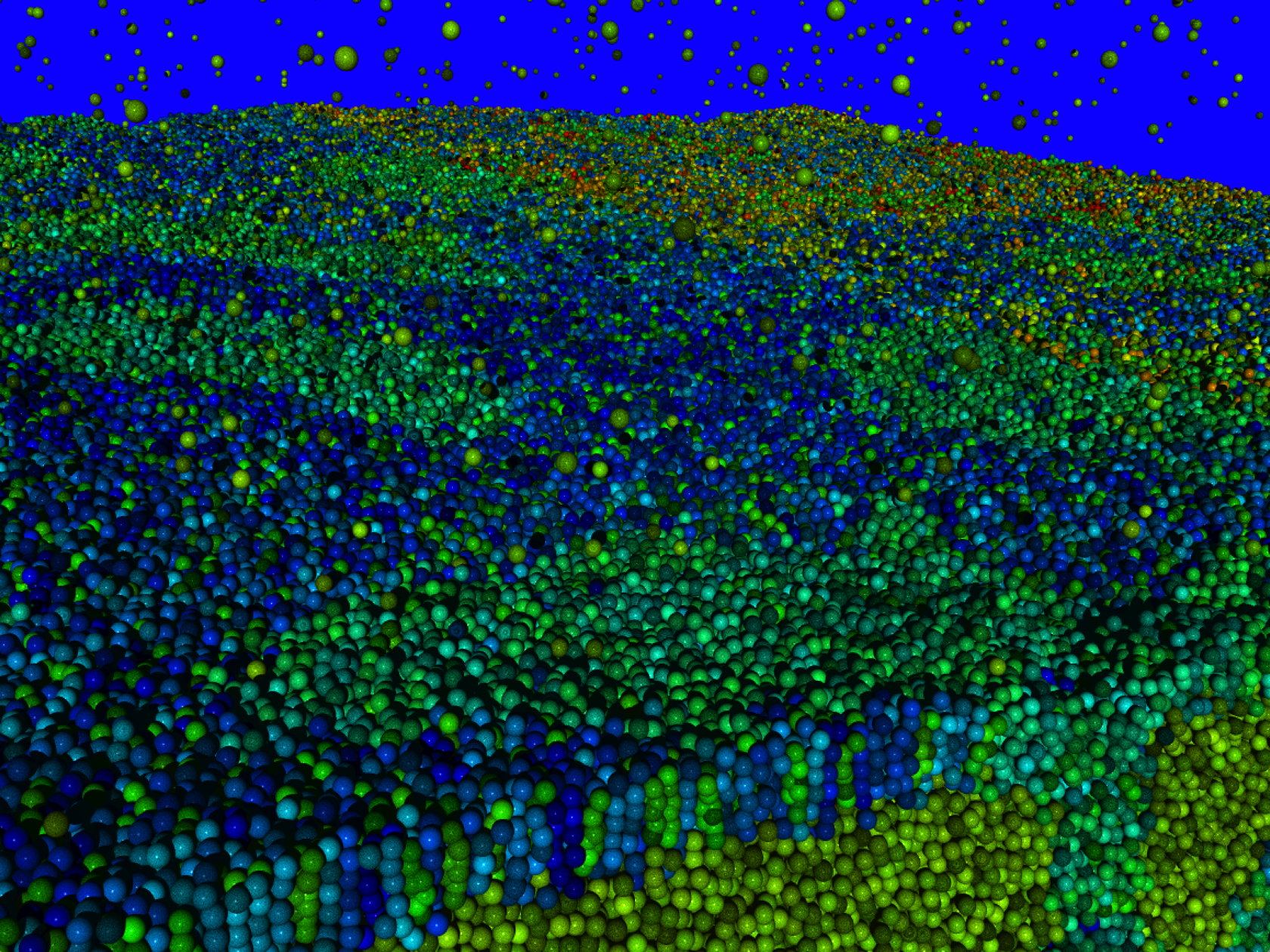Kitware and Intel Combine Expertise to Advance Proven Software Solutions

Integrating innovative, open-source libraries into VTK and ParaView will revolutionize rendering results.
With SC15 rapidly approaching, Kitware is pleased to announce its collaboration with Intel to integrate two open-source rendering libraries into the Visualization Toolkit (VTK) and ParaView: OpenSWR to rasterize images and OSPRay to ray trace images. The integration will make OpenSWR and OSPRay more accessible to VTK and ParaView users, amplifying their capacity to interactively visualize Big Data on supercomputers without employing graphics processing units (GPUs).
“OpenSWR and OSPRay will benefit VTK and ParaView users by reducing costs and memory constraints while increasing parallel rendering performance and fidelity,” said Dave DeMarle, who is leading the integration effort at Kitware. “In our tests, we found OpenSWR to be competitive with GPU rendering on moderate and larger sized meshes.”
The integration of OpenSWR and OSPRay into VTK and ParaView will allow users to easily switch between image rasterization and ray-tracing processes to maximize results. OpenSWR is a software rasterization engine optimized on Intel processors, making it fast enough to be suitable for rendering extraordinarily large data sets in VTK and ParaView. Also optimized for Intel processors, OSPRay enhances the quality of rendered images and provides VTK and ParaView users with unprecedented capabilities. Realistic yet still interactive illumination models, for example, enabling users to simultaneously recognize small- and large-scale properties in their data.
“One of our top priorities since launching this initiative has been to ensure that ParaView and VTK users can make optimal use of the Intel supported Software Defined Visualization open-source projects (http://www.sdvis.org), providing new levels of interactivity and higher fidelity visualization for large-scale data. Kitware has been a fantastic partner, as we’ve worked together to integrate and deliver these new software-rendering technologies, enabling more flexible and rapid methods to drive new scientific insights,” said Jim Jeffers, Principal Engineer and Manager for Intel’s HPC Visualization team.
The next release of ParaView, version 5.0, will introduce binaries that include OpenSWR and OSPRay. The libraries will also be tightly integrated into VTK’s rendering backend. The integration effort is just one push to modernize VTK’s rendering capabilities. In 2014, Kitware began rewriting the majority of VTK’s rendering code. As part of the rewrite, Kitware introduced a new rendering engine, which was made available in VTK 6.2. The new engine significantly enhances rendering speed and memory utilization, with improvements to volume rendering performance reaching 300 percent. To further modernize VTK, Kitware has been working with Intel to support the toolkit’s efficient use of central processing units (CPUs) and CPU coprocessors such as Intel® Xeon PhiTM Coprocessor.
“Modernizing visualization tools like ParaView and VTK to better leverage the available compute resources in multicore Intel® Xeon® processors and many-core Intel® Xeon PhiTM products, both of which utilize the same source code and programming models, will provide the foundation for the performance and features that are needed to meet future visualization requirements, which are being driven by the exponential growth in data as we move toward ExaScale computing,” Intel’s Jeffers said.
VTK is an open-source, freely available software system for three-dimensional (3D) computer graphics, modeling, image processing, volume rendering, scientific visualization, and information visualization. It provides the basis for data processing and rendering capabilities for many advanced visualization applications, such as ParaView. ParaView was developed to analyze extremely large data sets using distributed memory computing resources. Its flexibility allows developers to tailor functionality to specific problem domains. For information on leveraging VTK and ParaView, please stop by Kitware’s booth (#2639) at SC15, or email kitware(at)Kitware(dot)com.
The 1.44 million-atom GROMACS dataset used for this visualization is courtesy of Peter Tieleman of the University of Calgary.
